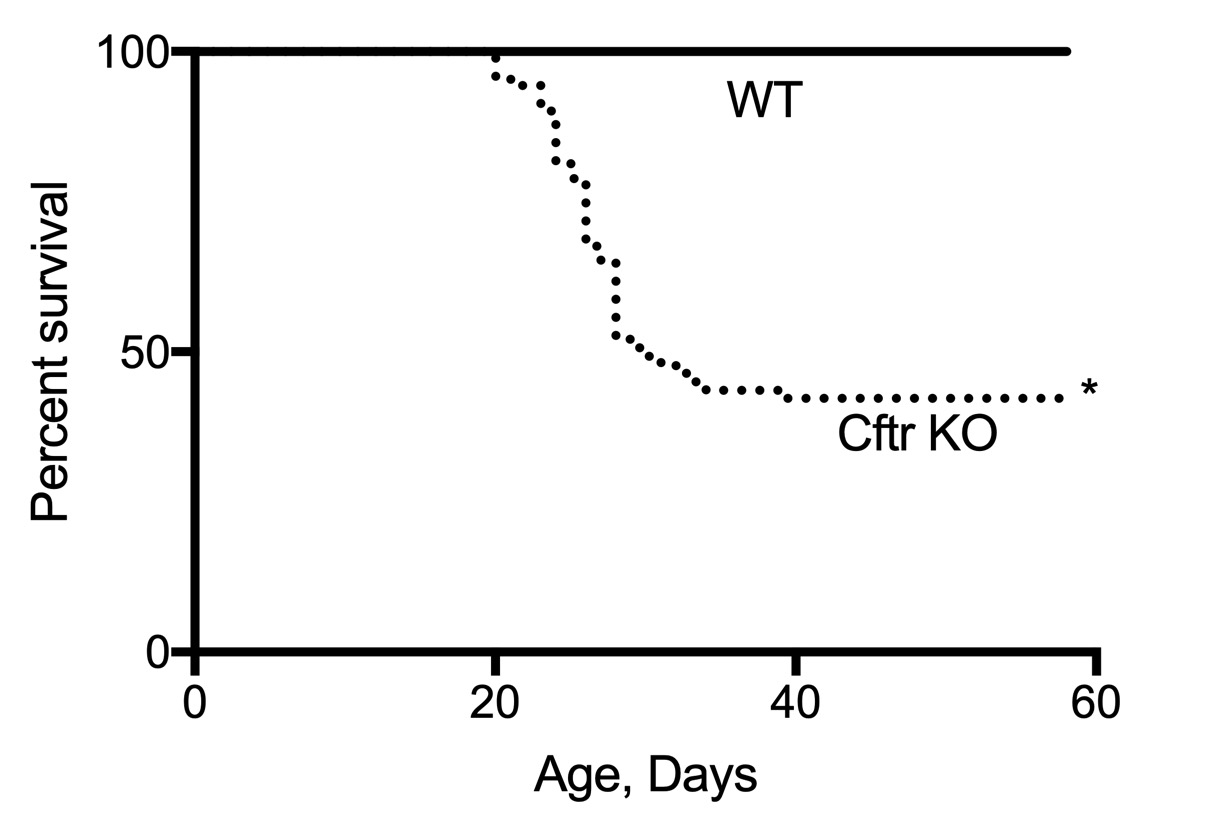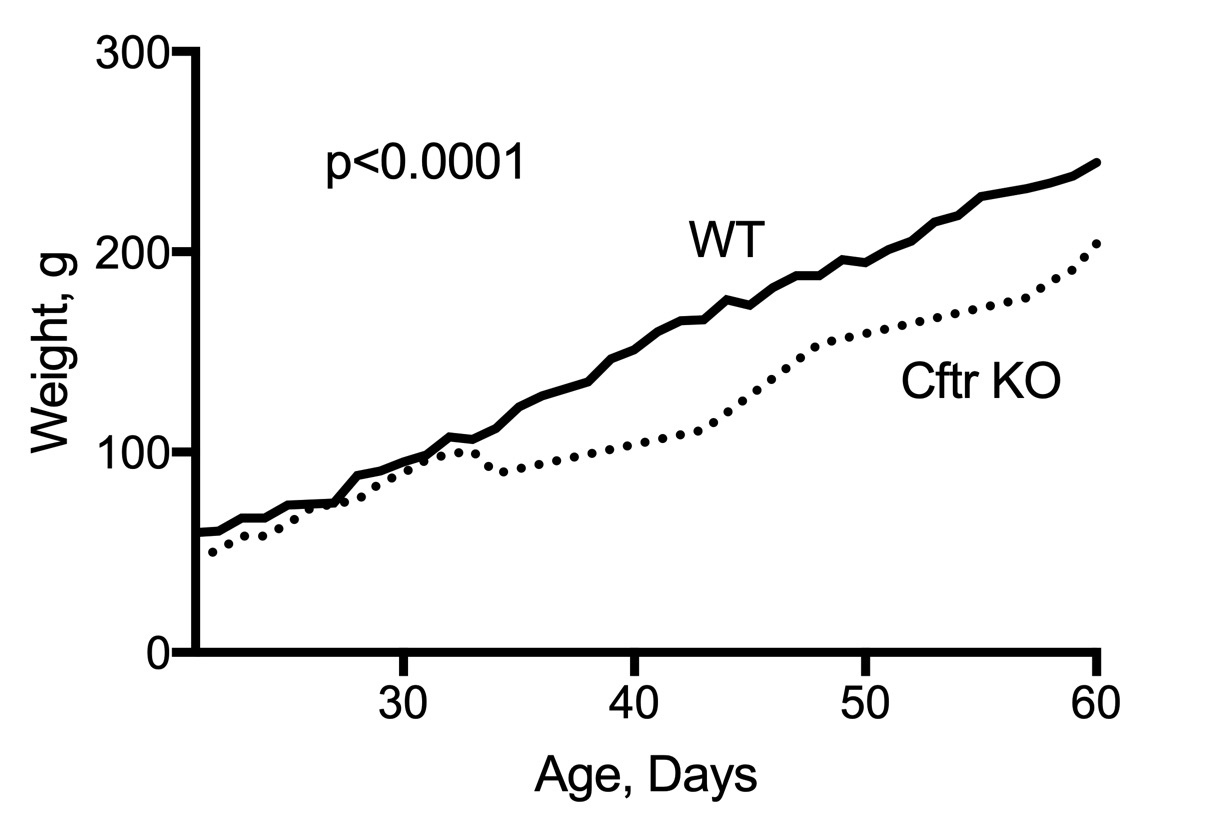General Characteristics
Lifespan: 2.5-3.5 years
Gestation time: 22 days
Litter Size: 10.5 pups on average
Age to sexual maturity: 8 weeks
Adult weight: 250 - 300 grams for females; 450 - 650 grams for males

The Cystic Fibrosis Model
The first CF-knockout rat model was published in 2014.1 New models have recently been developed including F508del,2 G551D,3 and G542X.3 The CF rat model has assisted researchers in studying disease manifestations including lung disease, bone development and growth, and reproductive tract abnormalities.

